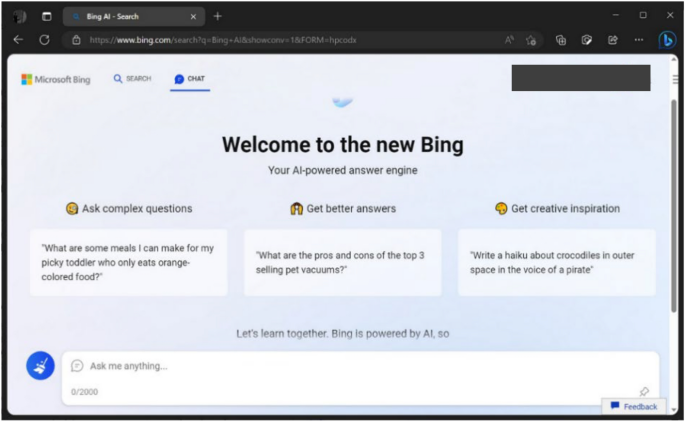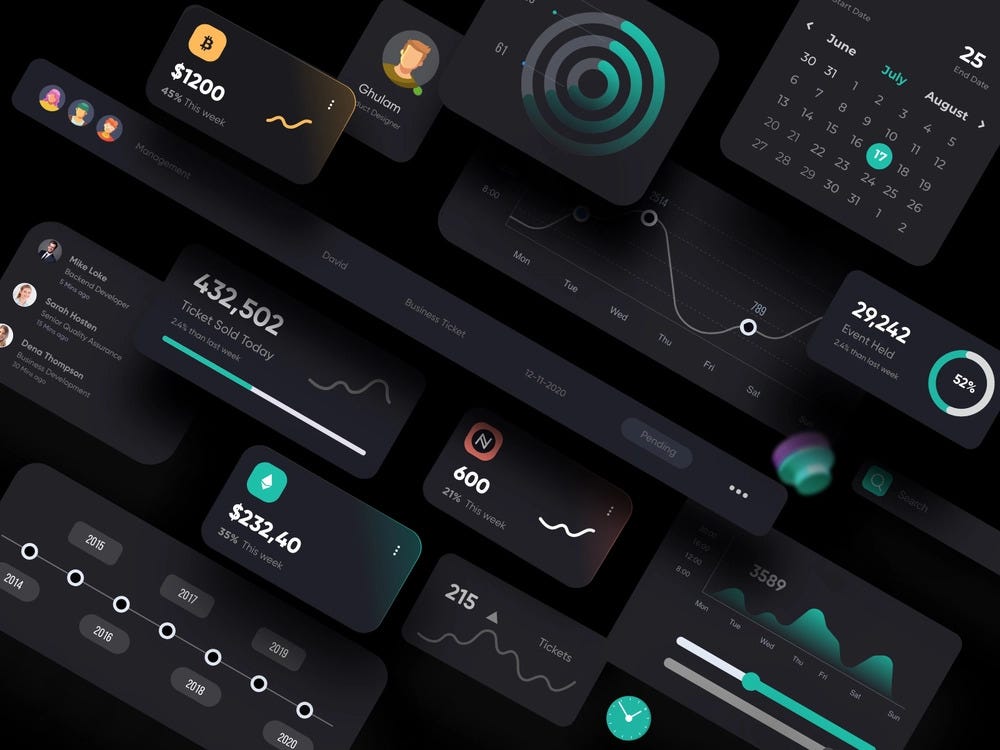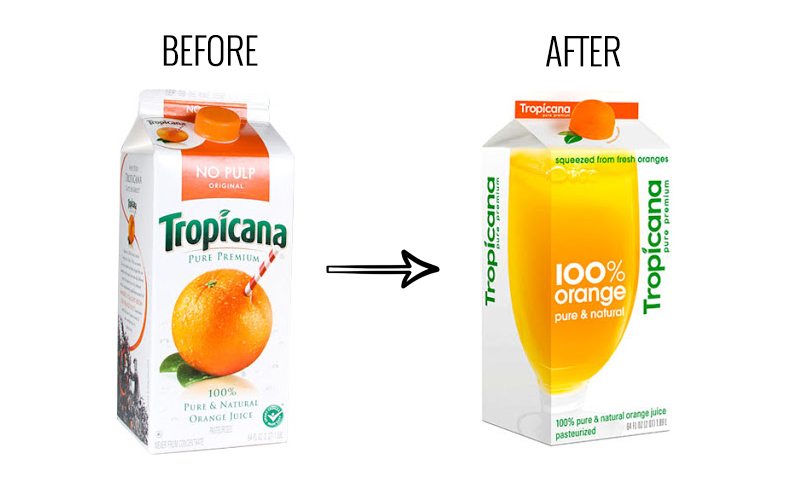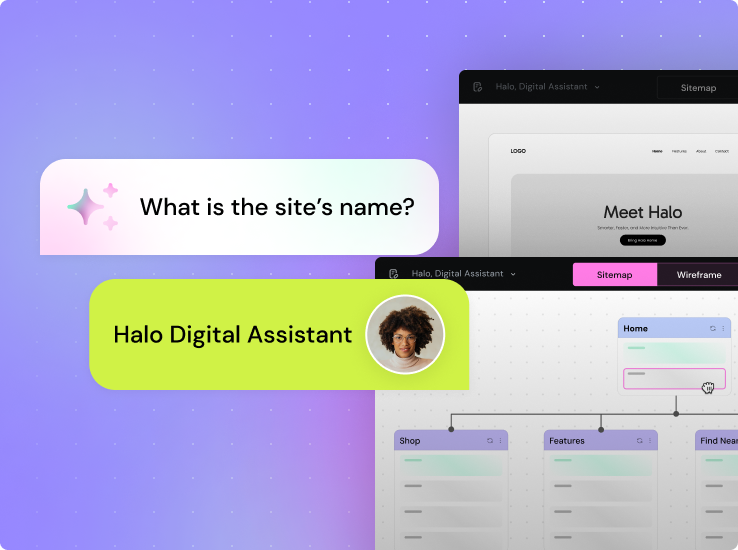Seamlessly Integrating Stock Photography with AI Design Tools
A Visual Creator's Guide to Blending Traditional Photography with AI Innovation
The intersection of stock photography and artificial intelligence is transforming how we create visual content. I'm excited to share how this powerful combination is revolutionizing design workflows and opening new creative possibilities for visual creators across industries.
The Evolution of Visual Content Creation
I've witnessed a remarkable transformation in how visual content is created over the past decade. What was once the domain of professional photographers and graphic designers has now become accessible to creators at all skill levels, thanks to the integration of AI into design workflows.

The shift from traditional stock photography to AI-enhanced visual assets represents one of the most significant changes in the creative industry. Where we once relied solely on pre-shot stock images with limited customization options, we now have the ability to blend, modify, and completely transform these assets using ai visual tools that continue to grow more sophisticated.
Impact of AI Design Tools on Visual Creation
The convergence of photography expertise and AI innovation has created a new paradigm in design workflows. As someone who works with visual content regularly, I've found that this combination offers unprecedented advantages:
- Time Efficiency: Projects that once took days can now be completed in hours or even minutes
- Cost Reduction: The need for expensive photo shoots or premium stock subscriptions has decreased
- Creative Flexibility: The ability to customize and blend elements creates unlimited possibilities
- Accessibility: Advanced design capabilities are now available to creators of all skill levels
This evolution has democratized visual content creation, allowing businesses and individuals to produce professional-quality visuals without extensive training or expensive equipment. The impact on creative industries has been profound, with new roles emerging that specifically focus on the intersection of traditional photography and AI enhancement.
Understanding Stock Photography in the AI Era
The landscape of stock photography has undergone significant changes with the rise of AI design tools. I've observed how traditional stock photography platforms are adapting to this new reality, with many now incorporating AI features directly into their offerings.
Stock Photography Licensing Models
flowchart TD
A[Stock Photography Licensing] --> B[Traditional Models]
A --> C[AI-Influenced Models]
B --> D[Rights Managed]
B --> E[Royalty Free]
B --> F[Extended License]
C --> G[AI-Enhanced License]
C --> H[Hybrid Content License]
C --> I[Generative Modification Rights]
style A fill:#FF8000,stroke:#FF8000,color:white
style B fill:#f9f9f9,stroke:#ddd
style C fill:#f9f9f9,stroke:#ddd
style G fill:#FFF0E0,stroke:#FF8000
style H fill:#FFF0E0,stroke:#FF8000
style I fill:#FFF0E0,stroke:#FF8000
AI tools are reshaping stock photography business models in several key ways. Traditional stock photography platforms are now facing competition from AI image generators for business that can create custom visuals on demand. This has led to a shift in how stock photography is priced, licensed, and distributed.
Ethical Considerations
When blending stock photography with AI-generated elements, I always consider the ethical implications, including:
- Proper attribution for the original photographer
- Transparency about AI-enhanced modifications
- Adherence to licensing terms when modifying stock images
- Avoiding misrepresentation of real people or places
Finding and integrating relevant stock assets has traditionally been a time-consuming process, often requiring extensive searching through massive libraries with limited filtering options. PageOn.ai's Deep Search functionality has transformed this experience for me by using AI to understand the context of my project and recommend highly relevant stock assets that align with my creative vision.

The AI era has also introduced new considerations for stock photographers themselves. Many are now creating images specifically designed to work well with AI enhancement tools, considering factors like composition, negative space, and elements that can be easily modified or replaced. This symbiotic relationship between photographers and AI tools is creating a new category of visual assets optimized for the hybrid creation process.
Key Integration Methods for Stock Photography in AI Tools
I've discovered several effective techniques for seamlessly blending stock photos with AI-generated elements. The key is understanding how to maintain visual coherence while leveraging the strengths of both mediums.
Stock-AI Integration Techniques
flowchart TD
A[Stock-AI Integration Methods] --> B[Background Replacement]
A --> C[Object Addition/Removal]
A --> D[Style Transfer]
A --> E[Content Expansion]
B --> B1[Replace photo background with AI scene]
C --> C1[Add AI-generated objects to stock photo]
C --> C2[Remove unwanted elements with AI inpainting]
D --> D1[Apply artistic style from one image to another]
E --> E1[Extend image boundaries beyond original frame]
style A fill:#FF8000,stroke:#FF8000,color:white
style B fill:#f9f9f9,stroke:#ddd
style C fill:#f9f9f9,stroke:#ddd
style D fill:#f9f9f9,stroke:#ddd
style E fill:#f9f9f9,stroke:#ddd
One of the most powerful features I've used is PageOn.ai's AI Blocks system, which allows for modular assembly of mixed-media visual content. This approach lets me break down complex visuals into manageable components, working with each element separately before combining them into a cohesive whole.

Stock photography customization has reached new heights with ai image generation tools that can modify existing images while maintaining photorealistic quality. Some of the most effective enhancement techniques I regularly use include:
- Subject Isolation: Extracting people or objects from stock photos to place in new contexts
- Background Enhancement: Replacing or modifying backgrounds while keeping original subjects
- Color Harmonization: Adjusting color schemes across combined elements for visual coherence
- Detail Augmentation: Adding AI-generated details to enhance stock imagery
- Content-Aware Expansion: Extending the boundaries of stock photos beyond their original frame
Voice/Text Commands in PageOn.ai
One of the most transformative aspects of working with PageOn.ai has been the shift from complex technical processes to conversational commands. Here are some examples of commands I use regularly:
"Find professional stock photos of business meetings and replace the background with a modern office with large windows"
"Take this product photo and create four seasonal variations with appropriate backgrounds"
"Blend this portrait photo with an abstract digital art style while keeping the face recognizable"
The ability to transform stock photo integration from a complex technical process to a conversational interaction has dramatically reduced the learning curve for creating professional visuals. This democratization of design capabilities is particularly valuable for small businesses and independent creators who may not have access to professional design teams.
Practical Applications Across Industries
I've seen firsthand how the integration of stock photography with AI design tools is being applied across various industries, creating new possibilities for visual communication and engagement.
Marketing Case Study: Campaign Material Creation

In a recent marketing campaign for a lifestyle brand, our team faced the challenge of creating consistent visual assets across multiple channels with a limited budget. By using a core set of stock photographs integrated with AI-generated elements:
- We created 50+ unique visuals from just 10 base stock photos
- Reduced production time from 3 weeks to 4 days
- Maintained perfect brand consistency across all assets
- Achieved a 32% higher engagement rate compared to previous campaigns
Social Media Content Creation
Content creators are leveraging free AI tools for generating images alongside stock photography to maintain a consistent posting schedule while keeping visuals fresh and engaging.
By starting with high-quality stock imagery and applying AI modifications specific to current trends and topics, creators can produce timely, relevant content that resonates with their audience without the need for daily photo shoots.
E-Commerce Product Displays
Online retailers are transforming basic product photography by using AI to create lifestyle contexts and seasonal variations without additional photo shoots.
A single product photo can be placed in multiple settings, shown in different color variations, or displayed in contextual use cases—all through the combination of stock photography backgrounds and AI customization.
Industry-Specific Applications
PageOn.ai's Agentic capabilities have been particularly impressive in transforming basic stock photos into industry-specific visual narratives. For example, a generic office stock photo can be intelligently transformed into a healthcare setting, complete with appropriate medical elements, color schemes, and emotional tone—all while maintaining photorealistic quality.
This ability to adapt and contextualize visual content for specific industries has proven especially valuable for multi-market businesses that need to communicate effectively across diverse sectors without creating entirely separate visual libraries for each audience.
Technical Considerations for Optimal Integration
When combining stock photography with AI-generated elements, I've found that attention to technical details makes the difference between obvious composites and seamlessly integrated visuals.
Resolution Matching Process
flowchart LR
A[Input Stock Photo] --> B[Resolution Analysis]
C[AI Generation Settings] --> B
B --> D[Resolution Matching]
D --> E[Upscaling if Needed]
D --> F[Downscaling if Needed]
E --> G[Detail Enhancement]
F --> H[Detail Preservation]
G --> I[Final Integration]
H --> I
style A fill:#f9f9f9,stroke:#ddd
style C fill:#f9f9f9,stroke:#ddd
style D fill:#FF8000,stroke:#FF8000,color:white
style I fill:#FF8000,stroke:#FF8000,color:white
Color Grading & Style Matching
Achieving visual coherence between stock photography and AI-generated elements requires careful attention to color harmonization and style consistency. I follow these key principles:
- Analyze and match the color temperature of all elements
- Ensure consistent contrast and saturation levels
- Apply unified lighting direction and shadows
- Maintain consistent depth of field across elements
- Use color grading presets to unify diverse visual elements
Copyright & Attribution Requirements
When using stock photography in AI workflows, I always ensure compliance with these legal considerations:
- Verify the stock photo license permits modification and derivative works
- Maintain required attributions even when the image is significantly altered
- Be aware that some licenses may restrict certain types of AI modifications
- Consider obtaining extended licenses for commercial projects with wide distribution
- Document all source materials and modifications for proper record-keeping
PageOn.ai's Vibe Creation feature has been instrumental in ensuring stylistic consistency across my mixed-media projects. This tool analyzes the visual characteristics of a reference image (such as a key stock photo) and applies those stylistic elements to all AI-generated components, creating a cohesive visual language throughout the project.
For creators working with open source AI image generators, additional technical considerations may apply, as these tools often require more manual fine-tuning to achieve seamless integration with stock photography. However, they also offer greater flexibility for advanced users who want precise control over the integration process.
Overcoming Common Stock-AI Integration Challenges
Despite the advances in both stock photography and AI generation, I've encountered several common challenges when integrating these two visual mediums. Here's how I address them:
Common Integration Challenges
Quality Discrepancies
Challenge: Stock photography often has higher detail and more natural lighting than AI-generated visuals.
Solution: I use techniques like selective blending, where AI elements are introduced in less-focal areas of the image, or apply subtle texture overlays to unify the perceived quality. PageOn.ai's detail enhancement algorithms also help bridge this quality gap by upscaling AI elements to match stock photo resolution.
Contextual Mismatches
Challenge: AI-generated elements sometimes lack the contextual awareness to perfectly match the setting of a stock photo.
Solution: I provide detailed context in my generation prompts and use PageOn.ai's scene understanding feature, which analyzes the stock photo environment and ensures generated elements respect the existing context, including lighting direction, scale, and environmental factors.
Maintaining Authenticity
Challenge: Overuse of AI enhancements can make images feel artificial or uncanny.
Solution: I follow the "minimal effective modification" principle—only changing what's necessary to achieve the creative goal while preserving the authentic qualities of the original stock photography. This often means using AI for subtle enhancements rather than complete transformations.
PageOn.ai's intuitive interface has been crucial in eliminating many technical barriers to seamless integration. Instead of requiring advanced knowledge of layer masking, blend modes, and other complex editing techniques, the platform provides accessible tools that handle these technical aspects behind the scenes.

For creators without extensive technical backgrounds, this accessibility has been transformative, allowing them to focus on creative decisions rather than technical implementation. The platform's approach of "complexity in the background, simplicity in the interface" has made professional-quality visual integration accessible to a much broader audience.
Future Trends in Stock Photography and AI Design Tools
As I look toward the horizon of visual content creation, several emerging technologies and trends are poised to further transform how we blend photography and AI capabilities.
Emerging Technologies Timeline
timeline
title Evolution of Stock-AI Integration
2023 : Stock-AI Basic Integration
: Simple modifications and combinations
2024 : Real-time Customization
: On-demand stock photo adaptation
2025 : Contextual Intelligence
: AI understands visual context deeply
2026 : Seamless Reality Blending
: Indistinguishable merging of real and AI
2027 : Dynamic Visual Content
: Responsive images that adapt to viewer
Real-time Stock Photo Customization
I believe we're moving rapidly toward systems that will allow real-time customization of stock photography through advanced AI. Imagine browsing a stock photo library and being able to instantly modify elements like:
- Changing seasons or time of day in landscape photos
- Adjusting demographics of people in business settings
- Modifying products or props to match specific brands
- Altering architectural styles in building photographs
User-Generated Content Integration
The line between professional stock photography and user-generated content will continue to blur as AI enhancement tools become more accessible. I expect to see:
- Platforms that transform amateur photos into professional-quality assets
- Community-driven stock libraries with AI enhancement built in
- Hybrid models where users contribute base images that others can customize
- Brand-specific visual ecosystems combining stock, AI, and user content
PageOn.ai is well-positioned to evolve alongside these emerging trends in visual content creation. The platform's modular architecture allows for continuous integration of new AI capabilities as they develop, ensuring users always have access to cutting-edge tools for blending stock photography with AI-generated elements.

One of the most exciting prospects is the development of more sophisticated contextual understanding in AI systems. Future tools will likely be able to analyze a stock photograph and automatically suggest contextually appropriate modifications or enhancements based on the image's content, intended use, and target audience—further streamlining the creative process while maintaining creative control for the user.
Measuring Success in Stock-AI Visual Projects
To ensure that our stock photography and AI integration efforts are effective, I've developed frameworks for measuring success and optimizing results over time.
Key Performance Indicators for Stock-AI Visuals
When evaluating the effectiveness of integrated stock-AI visuals, I focus on these key performance indicators:
- Visual Coherence: Do the combined elements look natural together?
- Audience Engagement: How do viewers interact with the visual content?
- Brand Alignment: Does the visual accurately represent the brand's identity?
- Conversion Rate: Does the visual drive the desired action?
- Production Efficiency: Time and resources saved compared to traditional methods
- Uniqueness Factor: How distinct is the visual from competitors?
A/B Testing Framework for Stock-AI Visuals
I've found that systematic A/B testing is essential for optimizing stock-AI visual combinations. Here's the framework I use:
- Isolate Variables: Test one element change at a time (e.g., background, color scheme, subject positioning)
- Define Clear Metrics: Establish specific KPIs for each test (click-through rate, time on page, etc.)
- Segment Audience: Test variations with different audience segments to identify preferences
- Gather Qualitative Feedback: Combine quantitative data with qualitative responses
- Iterate Rapidly: Use insights to refine visuals and test again
PageOn.ai's analytics capabilities have been invaluable for understanding engagement with integrated visuals. The platform provides detailed insights into how viewers interact with different elements of a composite image, helping identify which aspects are most effective at capturing attention and driving engagement.
By establishing clear measurement frameworks and continuously testing and optimizing our stock-AI visual combinations, we can ensure that our creative efforts translate into tangible business results. This data-driven approach to visual content creation allows for continuous improvement and increasingly effective visual communication over time.
Transform Your Visual Expressions with PageOn.ai
Seamlessly blend stock photography with AI-generated elements to create unique, professional visuals that stand out from the competition.
Start Creating with PageOn.ai TodayLooking Forward: The Future of Visual Creation
As we've explored throughout this guide, the integration of stock photography with AI design tools represents a significant evolution in visual content creation. The ability to seamlessly blend these two worlds opens up creative possibilities that were previously unimaginable.
I believe we're just at the beginning of this visual revolution. As AI technologies continue to advance and become more accessible, the line between traditional photography and AI-generated content will continue to blur, creating new opportunities for expression and communication.
PageOn.ai stands at the forefront of this transformation, providing intuitive tools that make sophisticated visual integration accessible to creators of all skill levels. By combining the authenticity and emotional impact of stock photography with the limitless possibilities of AI generation, we can create visual content that is both deeply resonant and uniquely tailored to our specific needs.
Whether you're a marketing professional looking to stretch your visual content budget, a social media creator seeking to stand out in crowded feeds, or a business owner wanting to elevate your brand imagery, the combination of stock photography and AI design tools offers powerful solutions that will continue to evolve and improve in the years ahead.
You Might Also Like
Legal Interpretation Theory: From Textual Analysis to Visual Meaning-Making | PageOn.ai
Explore the evolution of legal interpretation theory from strict textualism to constructive meaning-making, and discover how visual tools transform complex legal reasoning into accessible frameworks.
Strategic Infographic Planning: Transform Complex Ideas into Visual Narratives | PageOn.ai
Master strategic content planning for infographics that tell clear visual stories. Learn frameworks, data visualization strategies, and design elements that transform complex ideas into engaging narratives.
Essential Elements Every Successful Startup Pitch Deck Must Include | PageOn.ai Guide
Discover the 9 essential elements every winning startup pitch deck needs, from compelling opening hooks to financial projections that captivate investors and secure funding.
Creating Interactive and Animated Infographics for Enhanced User Engagement
Discover how to transform data into captivating interactive stories through animated infographics. Learn best practices, technical approaches, and tools for creating engaging visual experiences.